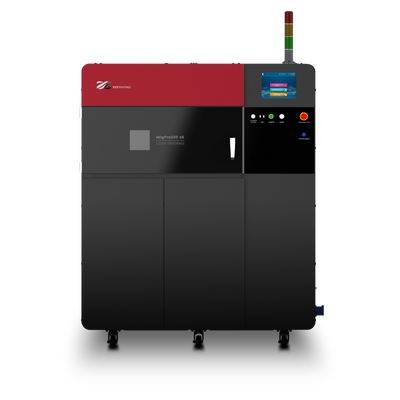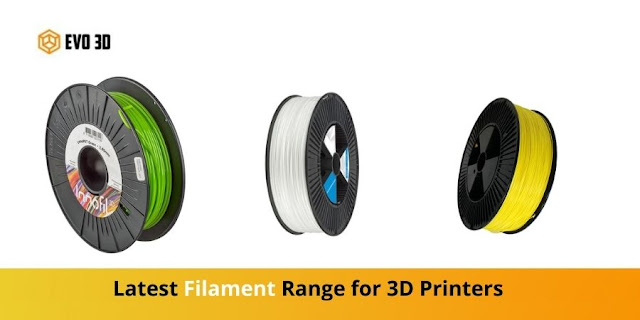What is a Large-Format FDM Printer and its Advantages?
A large-format FDM printer is a beast of a machine, capable of producing 3D prints at a scale that will blow your mind. With a minimum build volume of 700x700x820mm, and some models reaching up to 1100x500x820mm, these printers are perfect for those who want to go big or go home. But it's not just about the size. These printers offer a whole range of benefits that make them an ideal choice for additive manufacturing. From affordability and easy maintenance to accelerated 3D rapid prototyping, large-format FDM printers have got it all. So let's dive into the world of large-format FDM printing and explore its incredible applications.
Benefits of Large-Format FDM Printing
Large-Format FDM Printing, also known as large-format 3D printing, is a game-changer in the world of additive industrial manufacturing. Forget about those puny little 3D printers that can only produce tiny trinkets; we're talking about printers that can create life-sized objects. How cool is that? Now, let's delve into the benefits of large-format FDM printing. First and foremost, these printers are affordable and easy to maintain. Gone are the days of breaking the bank to bring your ideas to life. With large-format FDM printing, you can save money without compromising on quality. But the benefits don't stop there! Large-format FDM printers also offer accelerated 3D rapid prototyping, which means you can go from idea to prototype in no time.
 No more waiting around for weeks or even months to see your design come to life. With a large-formatFDM printer, you can speed up the entire development process and get your product to market faster. And let's not forget about specialized tooling for end-user products. Large-format FDM printers can handle the production of complex, customized tools that are essential for creating unique and innovative products. Say goodbye to generic tools that don't quite fit the bill. With large-format FDM printing, you have the freedom to design and produce tailor-made tools that perfectly match your requirements. Now, here's where things get really interesting. Large-format FDM printers offer wide material compatibility, which means you can print parts with better mechanical properties. This opens up a whole new world of possibilities for more advanced applications. And the best part? Minimal post-processing is required. No more wasting time and energy on tedious finishing touches. With large-format FDM printing, you can cut down on post-processing and focus on what really matters – bringing your ideas to life.
No more waiting around for weeks or even months to see your design come to life. With a large-formatFDM printer, you can speed up the entire development process and get your product to market faster. And let's not forget about specialized tooling for end-user products. Large-format FDM printers can handle the production of complex, customized tools that are essential for creating unique and innovative products. Say goodbye to generic tools that don't quite fit the bill. With large-format FDM printing, you have the freedom to design and produce tailor-made tools that perfectly match your requirements. Now, here's where things get really interesting. Large-format FDM printers offer wide material compatibility, which means you can print parts with better mechanical properties. This opens up a whole new world of possibilities for more advanced applications. And the best part? Minimal post-processing is required. No more wasting time and energy on tedious finishing touches. With large-format FDM printing, you can cut down on post-processing and focus on what really matters – bringing your ideas to life.Benefits of a Large Format Printer FDM Printer
1. Time and Cost Savings
Large build volume 3D printer offers significant time and cost savings. The development time from idea to full-scale prototype is shortened compared to manual techniques. This means you can test your designs at a 1:1 scale faster and get to market quicker. Plus, large-scale 3D printing reduces the need for manual labor, saving you time and money. You don't have to spend countless hours on manual manufacturing when you have the power of a large-format FDM printer. So, say goodbye to expensive and time-consuming manual processes and embrace the efficiency and cost-effectiveness of large-format 3D printing. It's a win-win situation!
2. Unleashing Creative Freedom
Large-Format FDM printers unleash the power of creative freedom, allowing designers to explore unique geometries and bring tailor-made products to life. You don't have to be confined to the restrictions of traditional manufacturing processes anymore. Let your imagination run wild and create designs that were previously deemed impossible. With large-format 3D printing, you have the ability to push the boundaries of what's possible and truly make your mark in the world of product design. So go ahead, let your creativity soar and revolutionise the way things are made!
3. Simplified Testing and Manufacturing
Large-format 3D printing brings a simplified approach to testing and manufacturing processes. With fit-testing on prototypes, designers can ensure that the final parts or products will work seamlessly. This eliminates the need for extensive revisions and reduces the manufacturing time significantly. Additionally, the design and manufacturing processes are shortened, allowing businesses to bring their products to the market faster. So, no more waiting around for lengthy and cumbersome procedures. With large-format 3D printing, everything becomes faster and more efficient, giving manufacturers a reason to smile. Finally, a technology that understands the need for speed!
Conclusion
Large-format FDM printers offer a range of benefits to industrial manufacturing. They are affordable, easy to maintain, and speed up the 3D rapid prototyping process. These printers can also produce specialised tooling and end-user products at a real-world scale. With wide material compatibility and minimal post-processing requirements, large-format 3D printing ensures better mechanical properties for advanced applications.
It shortens the development time and reduces manual labour and costs. Moreover, it gives designers complete creative freedom to design unique geometries and tailor-made products. Fit-testing on prototypes becomes easier, accelerating the design and manufacturing processes.




Comments
Post a Comment